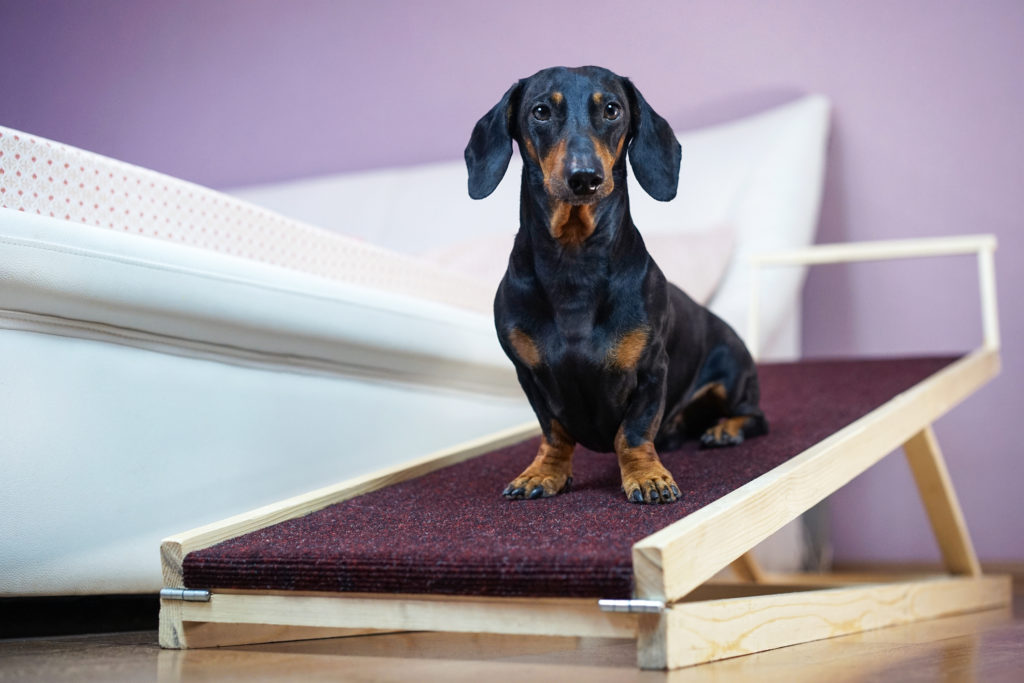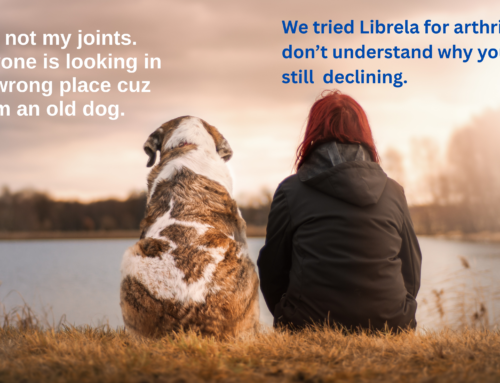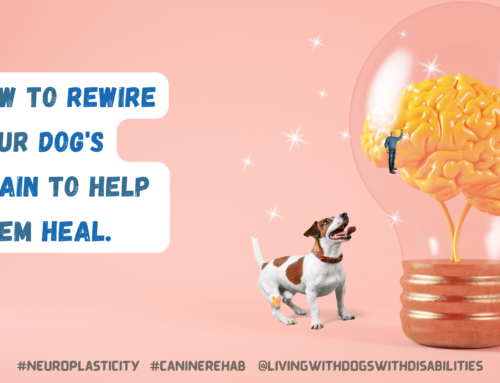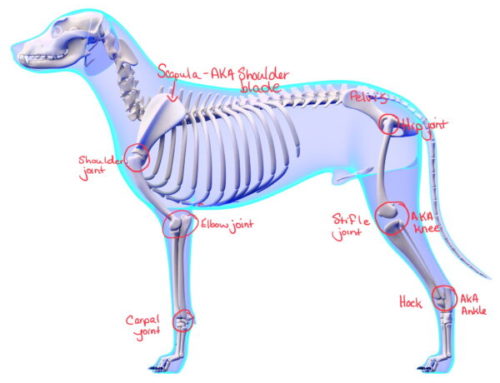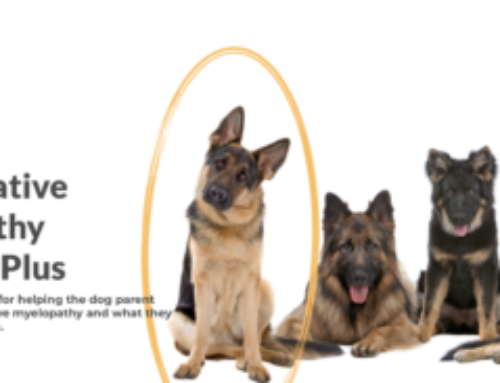Just like us, as your four legged friend ages, they may have aches, pangs, and balance issues that affect their mobility. It’s important to help maintain their mobility as they are susceptible to the philosophy of “use-it; or lose-it”. We know from our own experience that if we decrease out activity, we get stiff and and once easy movements becomes difficult, heavier, and that sometimes we feel weaker and have pain/discomfort with once easy movements. The bottom-line is movement is medicine, regardless of how many legs you have. Proper exercise and nutrition help to prevent mobility loss, AND there are ways simple changes you can make to the home environment that encourage mobility thereby helping your senior dog maintain his/her quality of life.
Baby Steps

A dachshund dog, black and tan, sits on a home ramp. Safe of back health in a small dog.
Have you noticed your dog hesitating a little jumping into the car, or up onto the couch/bed? Jumping puts more force through joints and tissues and may be painful/difficult for your senior dog. A step up, small set of stairs or ramp can help. In addition, these devices may save your back if you have gotten into the habit of boosting your dog up onto furniture. Pet stairs and ramps can be found online and often at local pet shops. Remember, it will take some time introduce and teach your dog how to use these devices. Don’t rush. For training tips, ask your veterinarian, the pet shop where you bought the device or contact your local canine rehab specialist directly, for some assistance.
In addition, if your dog has neck pain/issues or balance concerns, you may consider a raised platform feeder and water bowl. This is often less strenuous on the dog’s spine, especially the neck. If you are considering this option, double check with your veterinarian and some dogs are prone to bloat and should therefore avoid the raised bowls.
Don’t slip, get a grip!
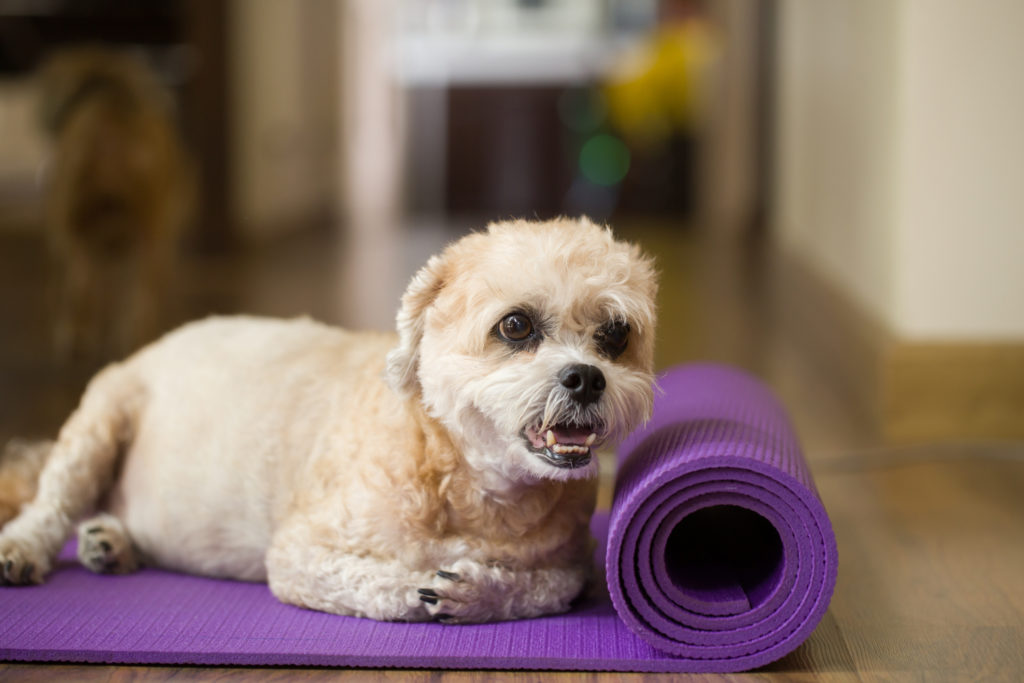
Dog on yoga mat
I am a big advocate of non slippery surfaces for dogs with mobility/balance concerns. Hardwood, ceramic and laminate flooring can be slippery. Dogs can get better footing with non-slip rugs or even yoga mats. This is especially useful on stairs. Be sure to get non-skid mats for your stairs! These are not only helpful for the aging dog but for dogs who have undergone orthopaedic surgery.
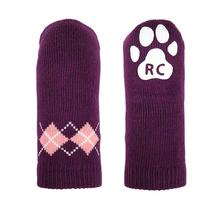
Another option, instead of redecorating, are paw socks with the rubber on the bottoms, designed for grip. There are also Dr. Busby ToeGrips which last one to three months, creating a “grip zone” for your dog on the move.
Good Night ZZZZ’s
Sometimes it is worth investing in an orthopaedic dog bed. It supports and soothes achy joints and helps reduce the risk of pressure sores if your dog is laying for long periods. If an orthopaedic bed isn’t in the budget, you may consider adding some memory foam to your dogs current dog bed.
Prevention and Early Intervention
All the above tips are suggestions to make it easier for your dog to get around your home and do not replace advice/assessment by your veterinarian. All information is intended for instruction and informational purposes only. If your dog is showing changes in behaviour/slowing down (i.e. difficulty with stairs, tripping, refusal to jump into a car, weakness/limping, etc.) and you haven’t already sought out help from a canine/animal health professional, it is recommended that you do. Prevention and early intervention are key to health and wellbeing.

